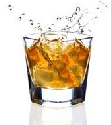Latest Blog Posts:
Get Updates & Coupons
The Relationship Between Memory Blackouts And Risks Of Alcohol-Related Injuries
A new research has shown the relationship between a college student’s memory blackouts from alcohol and the possibilities of him or her suffering from an alcohol-induced injury in the future.
The study encompassed five universities from North America and analysed data that came from more or less 800 undergraduates students and 150 plus postgraduate students. The participants were examined by the researchers for two years.
The study found out that “pervasive” heavy drinking was rampant among college campuses. The student participants were reported to have experienced at least one memory blackout a year before the research was conducted. Then, 7 percent of them said they have had six memory blackouts, at the least.
Students who have had the most number of blackouts are those called “sensation seekers”, students who are aged between 18 to 20. Also, they are the ones found to be drinking most heavily (having more than five drinks). Blackouts, the study clarified, define a person’s loss of ability to remember what happened, as opposed to the loss of consciousness due to too much alcohol consumption.
The risk of the prevalence of alcohol-related injuries was above 25 percent, and this both applies to girls and boys.
The study said that the more memory blackouts a student may have due to heavy drinking, the greater the chances of experiencing accidents or injuries. One or two memory blackouts added an automatic 57% to the risk. Participants who have had six blackouts or more tripled the risk percentage for injuries.
The researchers published the study online in the journal Injury Prevention, and they further explained that their results are suggestive of memory blackout screening at student health services being a helpful tool to prevent college alcohol related injury.
The news release of the study went on to say that in 2001, 600,000 college students in the US suffered from injuries related to alcohol consumption; and in 2005, almost 2,000 died from those injuries.




